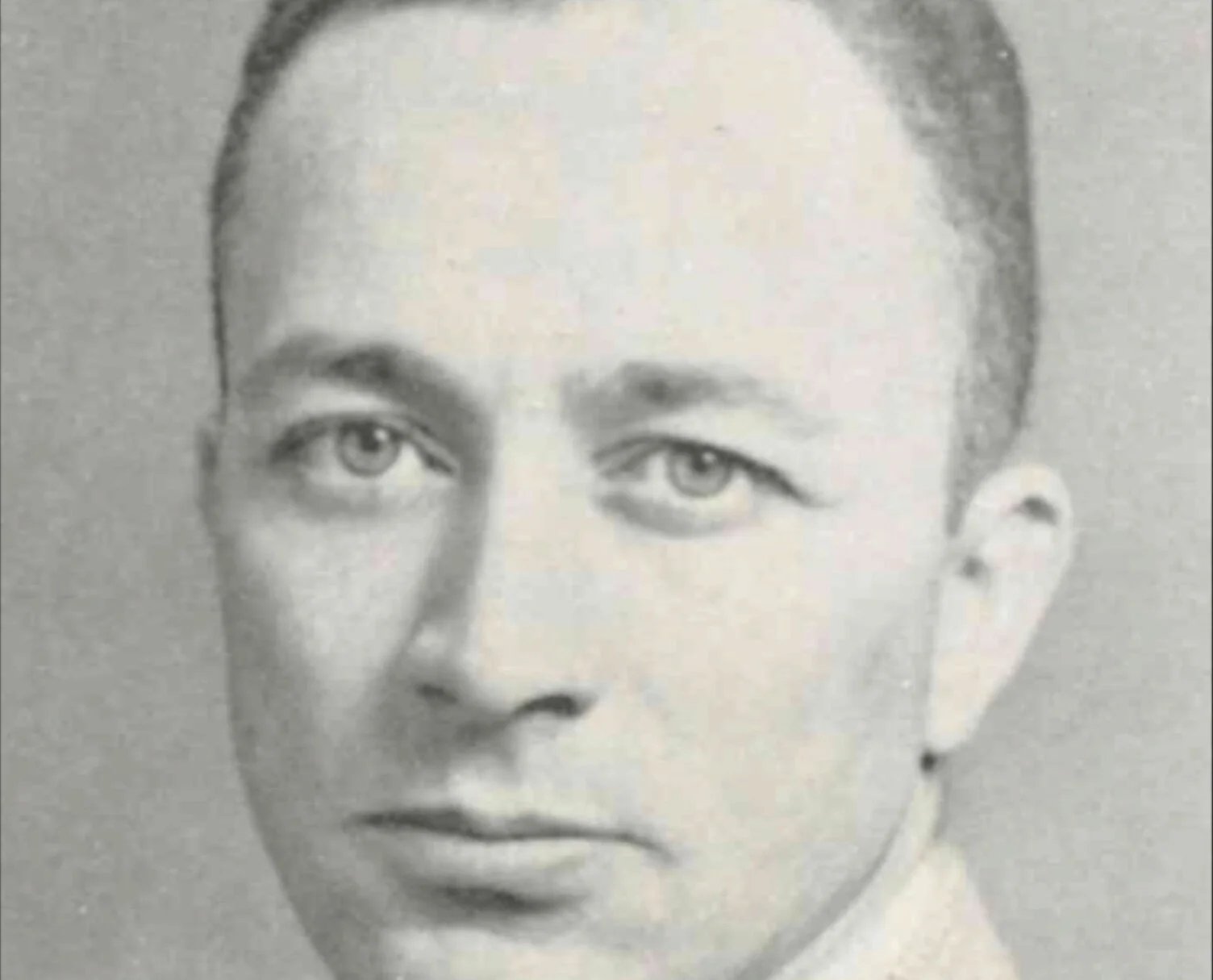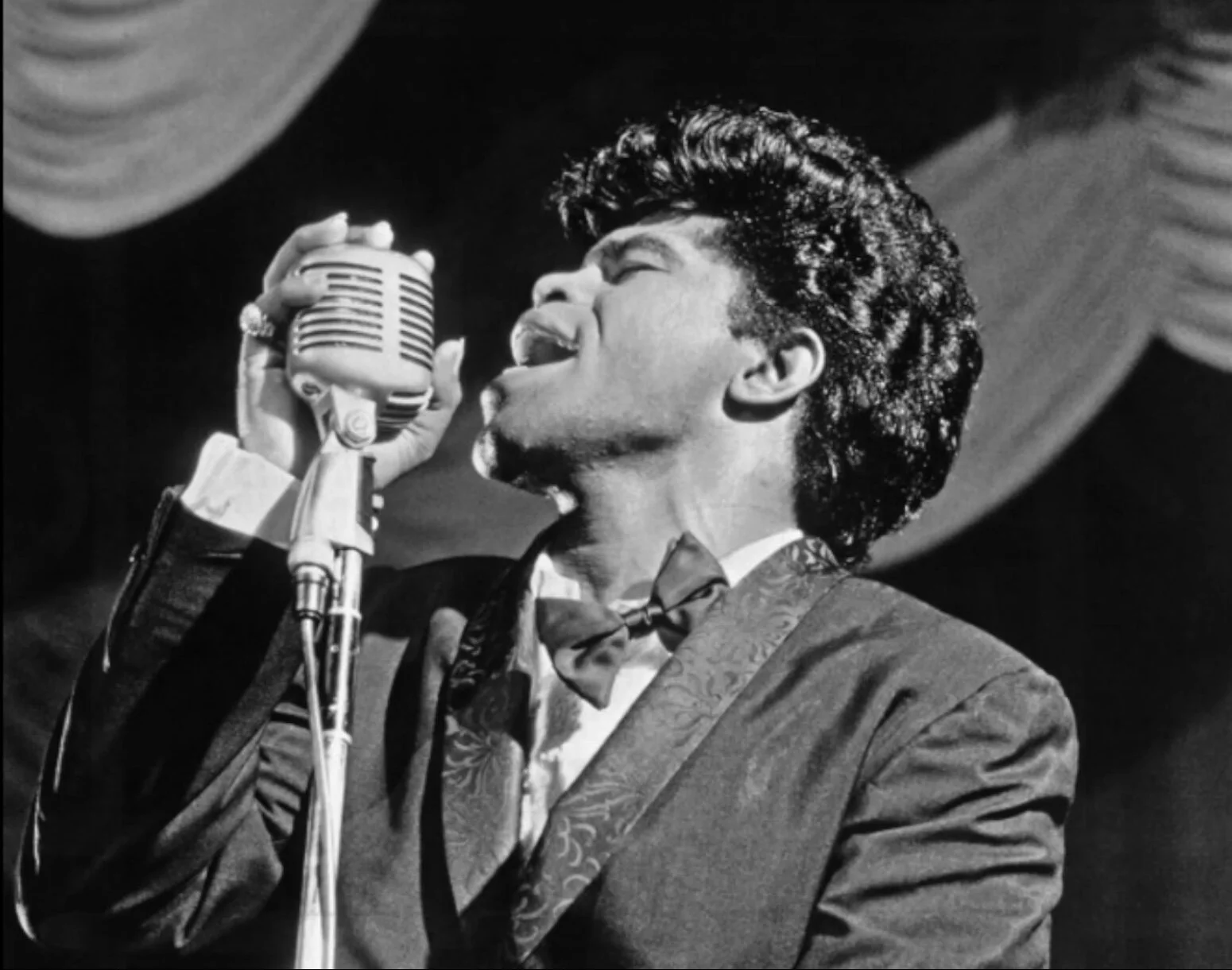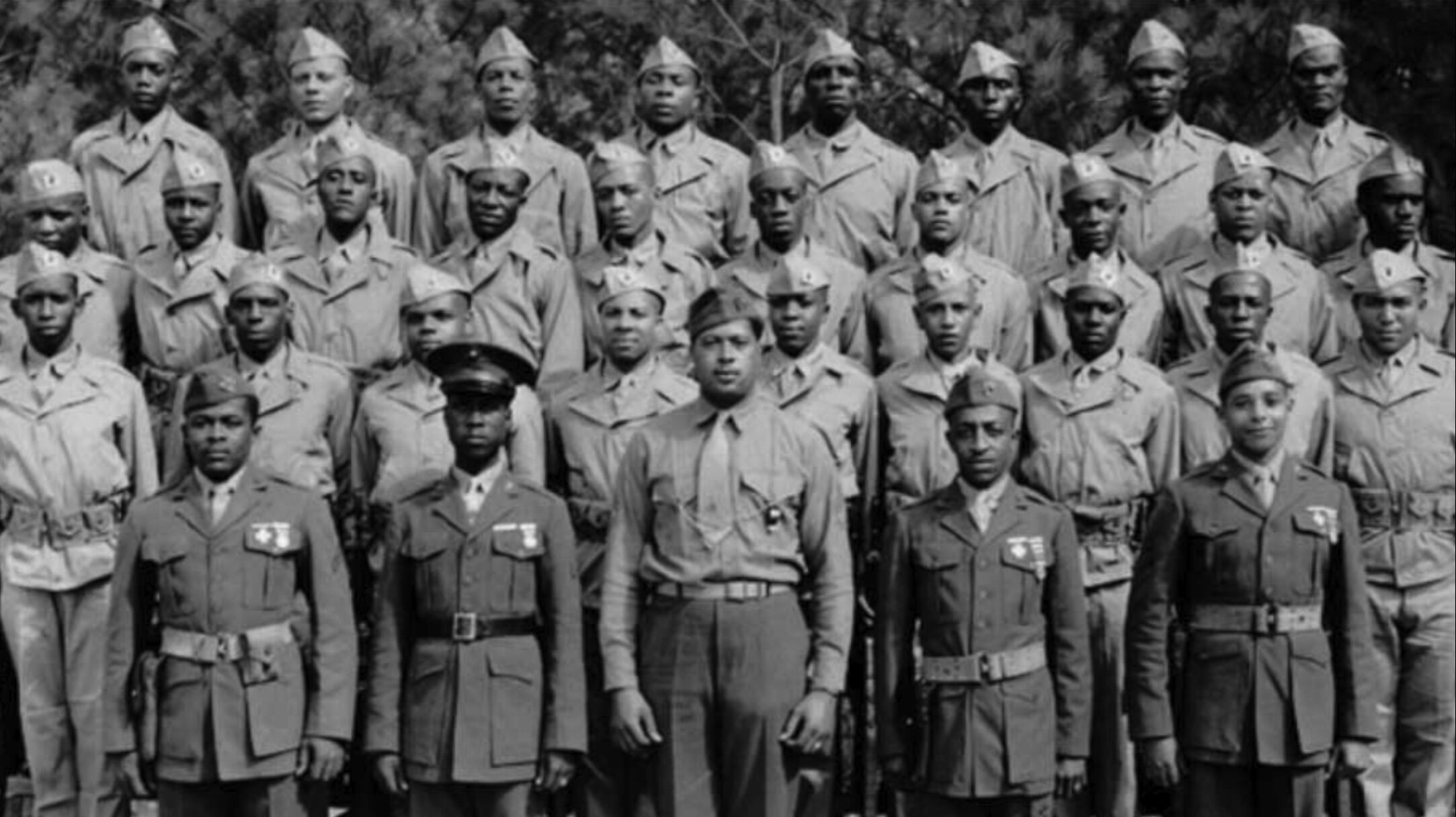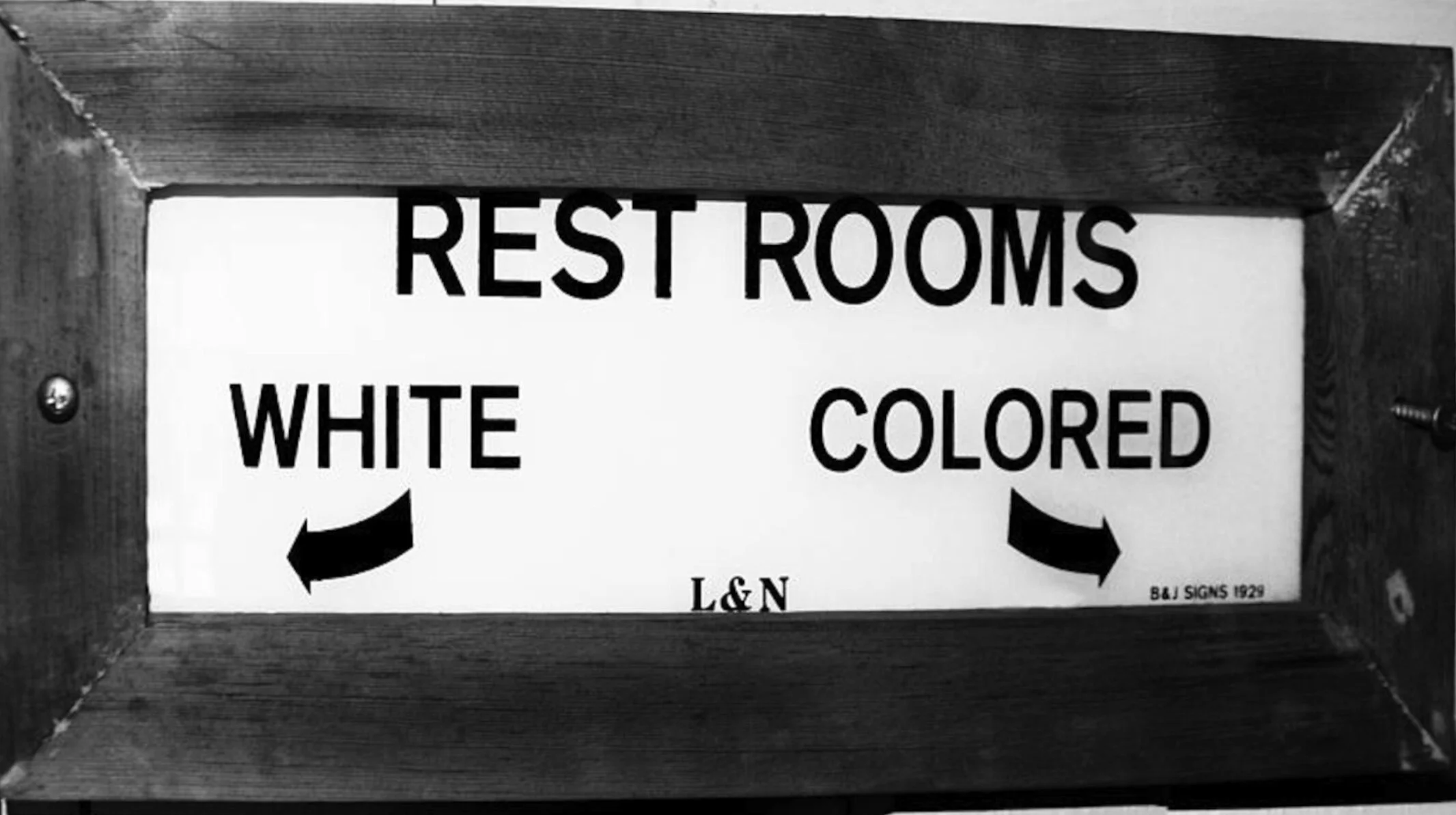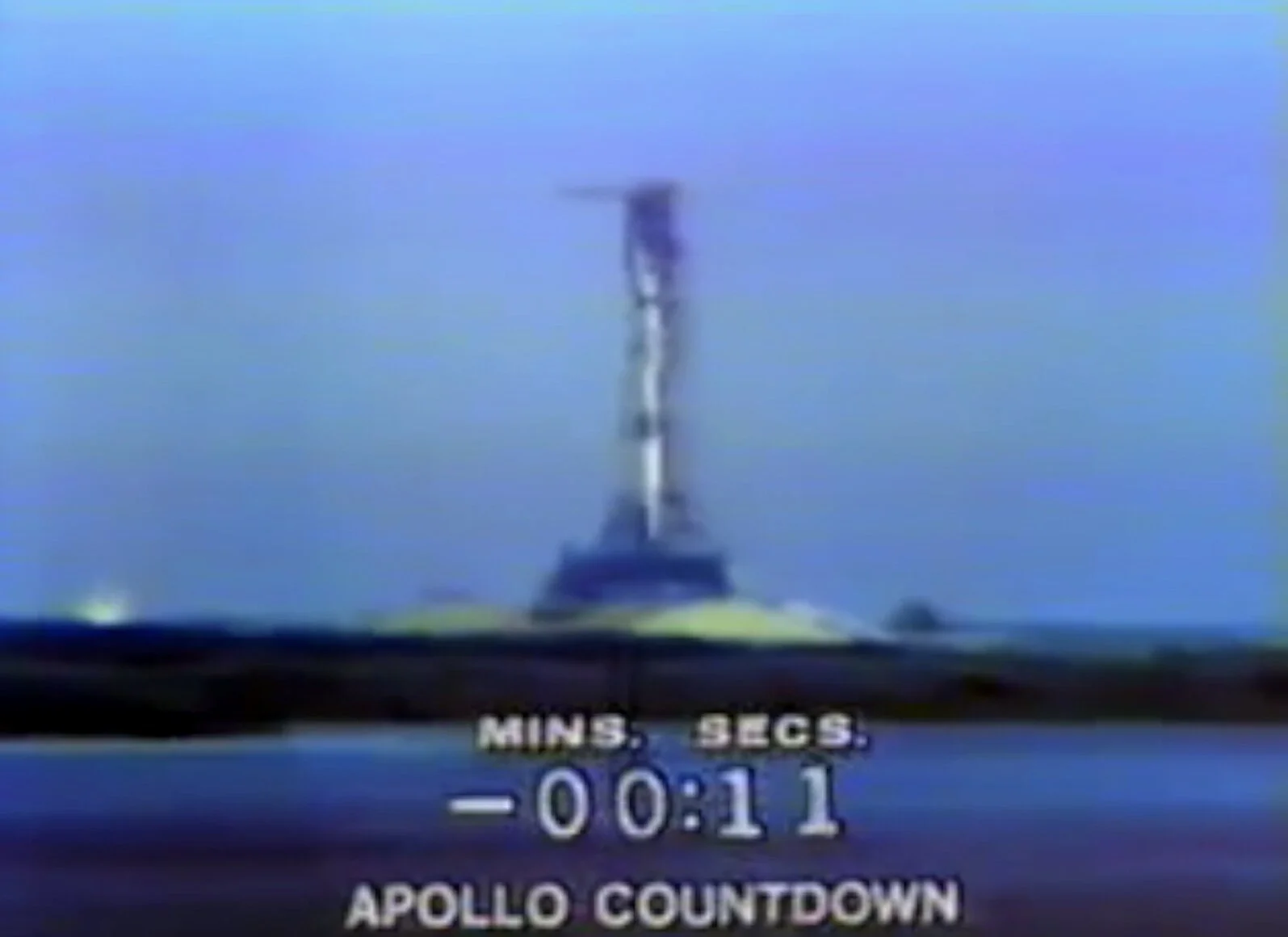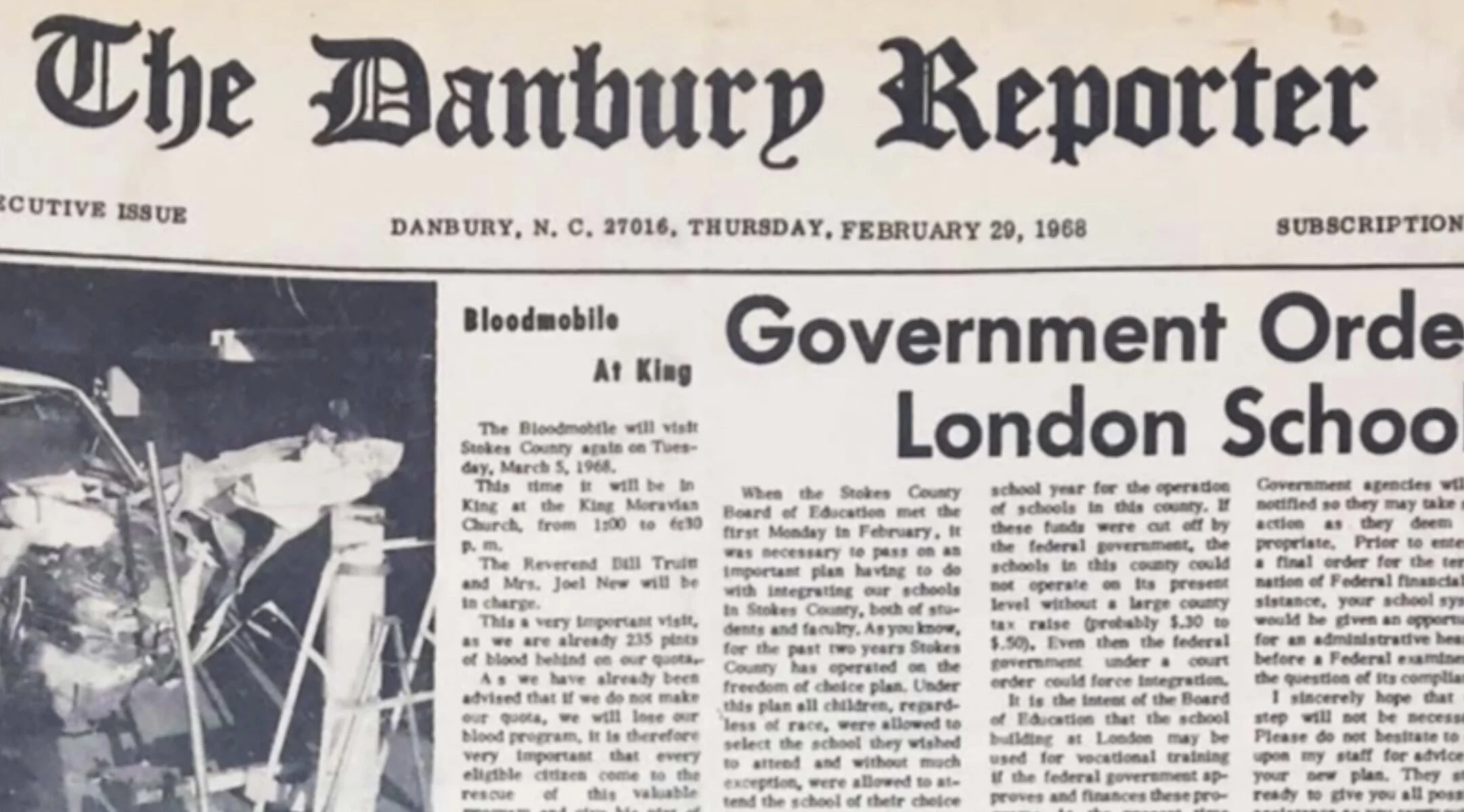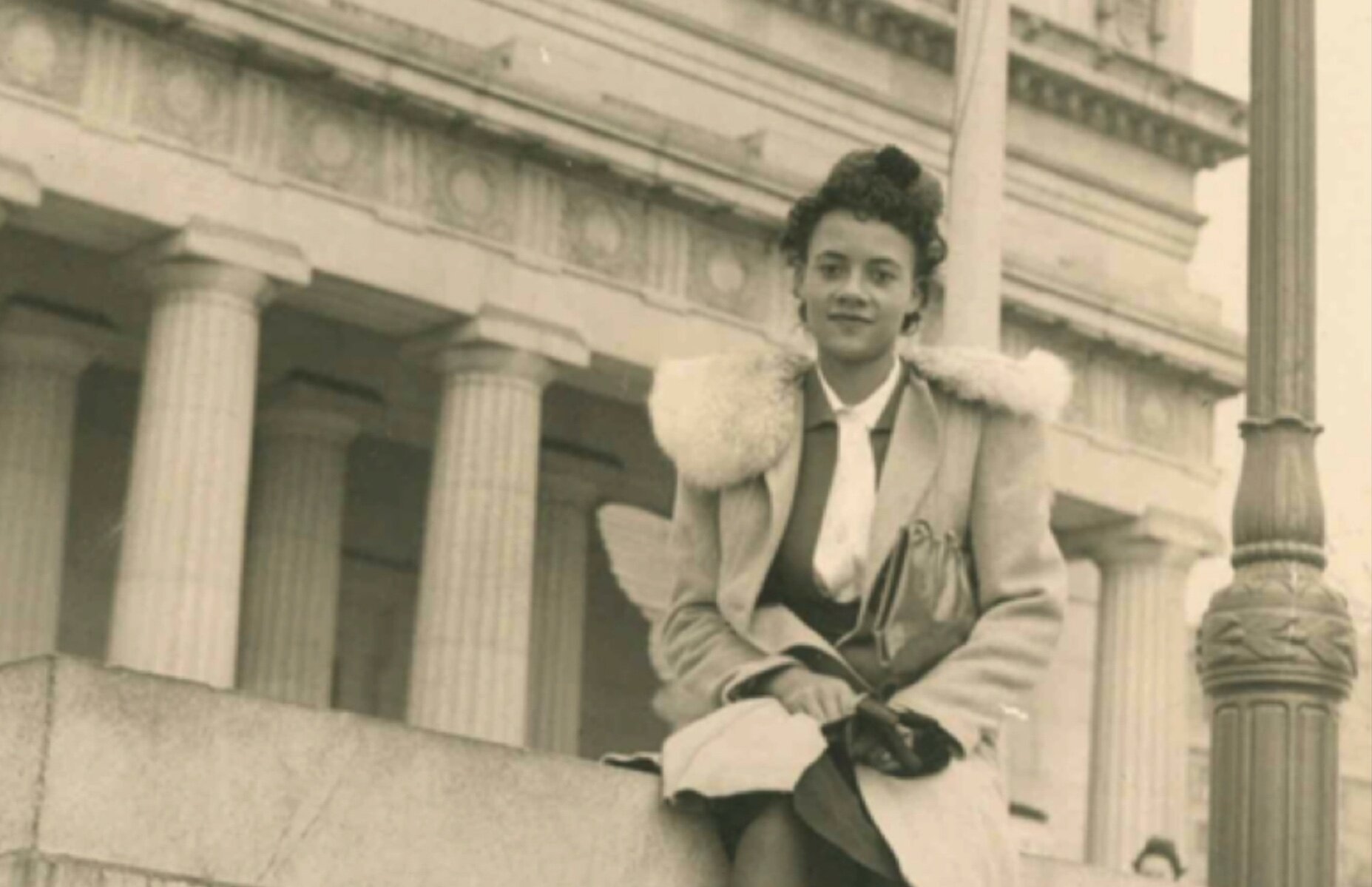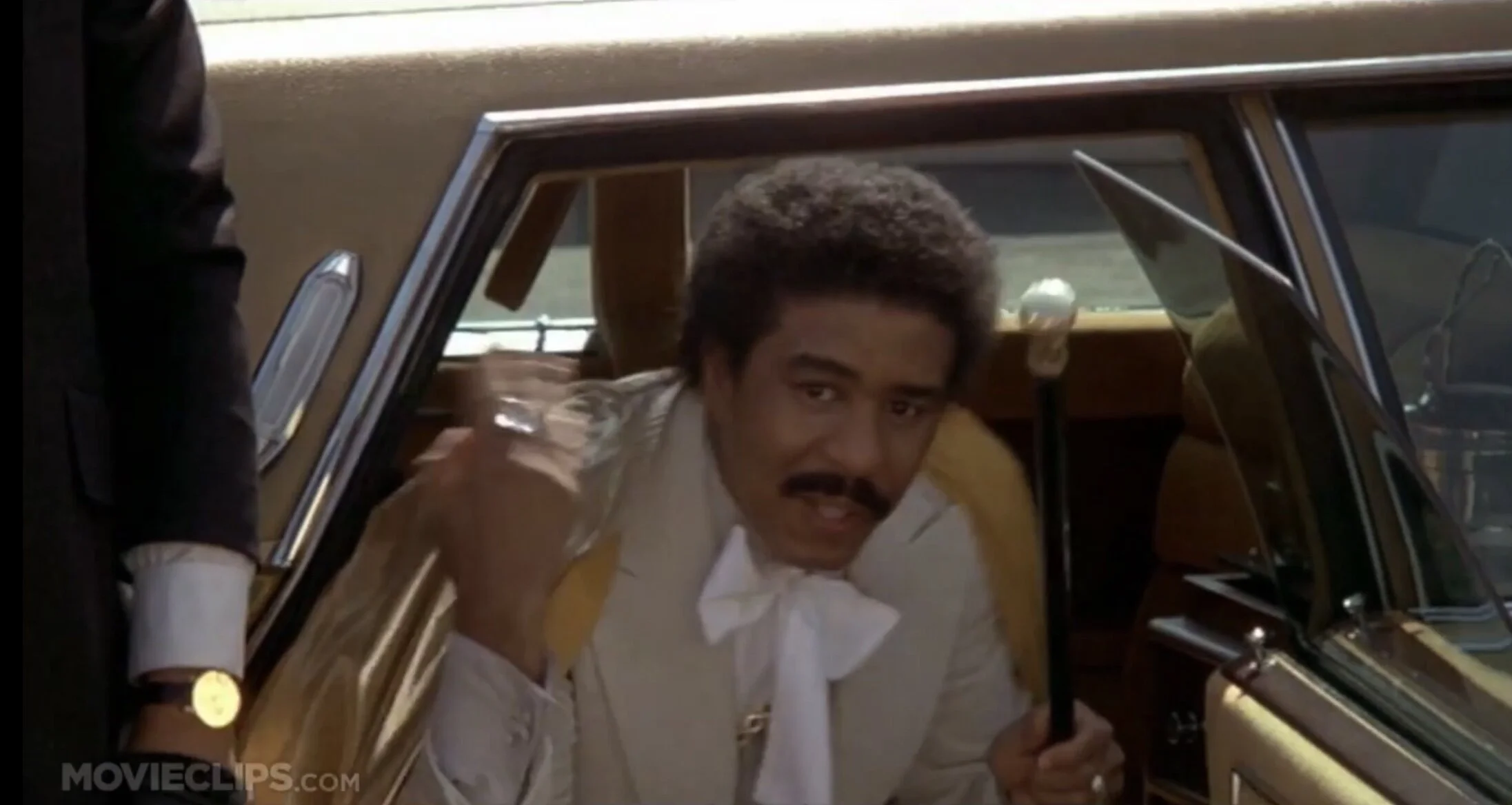Celebrating Courage
A Curriculum Guide to Understanding Race & American Culture in The Civil Rights Era & Today
by Dan Wolber, Ma, English Education, NBCT, retired teacher at North Stokes High School
Art prompts & Editing - Caroline Armijo, Director, The Lilies Project
The London High School Community in southeastern Stokes County in the 1960s was a microcosm of conflict and change in America in the Civil Rights Era. This guide serves as a useful map for teachers and students to explore that time and its impact on ourselves and society today.
Topics and resources provided will facilitate quick integration of study, presentation, and discussion relevant to social studies, literature/writing, science/environmental education, home and consumer sciences, physical education/athletics and music/art. Whether a group or individual multimedia presentation, or supplementary exploratory research/writing, these starting points will bring the world back to our school communities in meaningful ways. Character education and conflict resolution activities can be applied as well.
ORAL HISTORY prompt
Community/family based gathering of oral history, the genesis of Celebrating Courage, is useful across the curriculum. Smartphone audio and video apps provide ready tools for gathering and sharing of valuable human resources, their stories and perspectives. Generating pertinent interview questions is a valuable study and content extension skill across the curriculum. Oral history directives are included where applicable. Students may find equally powerful insights and testimony of courage in their own families and school communities.
Art Prompt
Use the art prompt for each topic to engage the students in a meaningful way and allowing them to tie into their senses with new ideas and both personal and cultural insights.
Curriculum index:
ENERGY AND ENVIRONMENTAL JUSTICE
MUSICIANS, BLACK & WHITE, LEADING THE WAY
SPORTS: THE BALL FIELD & GYM AS COMMON GROUND
WAR & RACE RELATIONS
JIM CROW SOUTH: SEGREGATION THEN & NOW
AMERICA AT THE BRINK: JFK, CUBAN MISSILE CRISIS, 1968, and 1969 MOONWALK
DESEGREGATION: THE CLOSING OF LONDON HIGH SCHOOL
WOMEN’S RIGHTS: ROLES IN THE CIVIL RIGHTS ERA
CIVIL DISOBEDIENCE: MARTIN LUTHER KING, JR, MALCOLM X and THE BLACK PANTHERS
MEDIA AND ADVERTISING: IMPACT ON EQUALITY
CONFLICT RESOLUTION: FIVE ESSENTIAL STEPS
VALUES CLARIFICATION & CHARACTER EDUCATION GUIDE WORDS
CLOTHING AND STYLE: SYMBOLS OF CHANGE
AFRICAN-AMERICAN COMEDIANS; TESTING THE LIMITS
ENDURING SYMBOLS, REBEL FLAG, FALLING STATUES, HERITAGE OR HATE?
ENERGY AND ENVIRONMENTAL JUSTICE
subjects: Social Studies, Science and Environmental Studies, related literature
level: writing/High School
As the Civil Rights Era draws to a close, we see the emergence of a new problem--the impact of growing energy needs on people and their environment. The 1970s brings a growing dependence on foreign oil, gas shortages (29:01), and tense relations with Middle Eastern oil powers such as Iran (29:24). Both in Russia and the United States, nuclear power plant failures at Chernobyl and Three-Mile Island (29:28) tragically contaminate communities and the environment for generations to come.
At the same time, the London/Walnut Cove/Walnut Tree Community welcomes the Belews Creek Power Station only to subsequently learn of the life-threatening health effects of coal ash within a few short decades. Environmental Justice is the lingering issue from the Civil Rights Era: the impact of environmental contamination particularly in low-income communities of color. In fact, the London/Walnut Cove/Walnut Tree Community has become known both statewide and nationally as “ground zero” for their leadership in the fight for coal ash clean up (See Historical Settlement at Belews Creek link in Winston-Salem Journal).
Watch the short documentary “We Shall Not Be Moved: Environmental Justice in Walnut Tree” to become familiar with how fracking, coal ash, and community action on a local level are part of national and global energy and environmental concerns.
Become familiar with the impact of gas shortages, nuclear power plant meltdowns, and the Iranian Hostage Crisis in the next phase of life in the London Community.
Consider (1) In what ways John L. Hairston’s generation has passed a torch of leadership to the next generation and the challenges they face? and (2) what are the implications of the closing message “this little light of mine...I’m going to let it shine” in your personal understanding of racial equality and the environment (1:22, 3:38,14:02)?
Oral History prompt
Many believe that climate change is the issue of our generation and that the challenge of our time is tantamount to President John. F. Kennedy’s call to land a man on the moon within a decade.
What essential questions would you ask an older family or community member about this challenge or comparison? How have attitudes changed about environment since the gas lines of the 70s (29:01), nuclear contamination at Three Mile Island (29:27), or wars fought in the oil rich Middle East? What lifestyle changes are present in your family or community? How should families discuss climate change? See links below.
Energy and Environment Resources
What America Looked Like: The 1970s Gas Crisis - The Atlantic
The Iranian hostage crisis and its effect on American politics
“We Shall Not Be Moved”: Environmental Justice in Walnut Tree”
Duke Energy and Challengers Reach Historic Settlement at Belews Creek/ W-S Journal
Celebrating Courage Weekend Videos, August 2018
Art Prompt
Use recycled materials to create a statement piece on how your life is directly impacted by climate change.
Create a landscape piece of land you or a family member treasures and wants to protect. Write a statement about what is special about this land.
Write a poem or song about an environmental concern or a significant weather event that you experienced either first hand or witnessed on the news.
Back to top
MUSICIANS, BLACK & WHITE, LEADING THE WAY
Subjects: Social Studies, literature and related writing, musiC
level: Middle & High School
Especially in the United States, popular music has been a unifying force between races. Consider musical icons in Celebrating Courage, others in the Civil Rights era, as well as entertainers today who fulfill this role.
Share audio/visual content, biography, significant quotes, impact/influence, relevance today.
topics
Jester Hairston (Stokes Co./Composer) :50 “Amen”
Sam Cooke (Soul) :50 “This Little Light of Mine”/”A Change is Gonna Come”
Sydney Bechet (R&B) 6:10
Josephine Baker (Jazz)
Louis Armstrong (Jazz)
Aretha Franklin (Blues)
Diana Ross & The Supremes (MoTown)
Marvin Gaye (MoTown)
James Brown (Soul)
Ray Charles (R&B:Country)
Charlie Pride (Country)
Elvis Presley (Rock/Pop/Gospel)
Nina Simone (Blues)
Oral History prompt
Photo and music collections provide powerful reference points for family history. Consider changes in clothing style and appearance by decade in Celebrating Courage and what you find in the family archives. Brainstorm where you can find pictures and music among your family collections.
Photo album
video cassettes
CDs
cassettes
8-tracks
vinyl
YouTube
What essential questions would you ask a family member about how clothing and style represents attitudes and values associated with that time period? What opinions might they have about trends today? How did music embody change in regard to race or gender in that time period? And today?
musician resources
Jester Hairston, “Amen,” Belews Creek, NC
Sam Cooke, ‘A Change is Gonna Come,’
Sidney Bechet
Revisiting Louis Armstrong in the Context of Civil Rights ...
Aretha Franklin: How Respect Became an Anthem for Civil Rights
Diana Ross and The Supremes
Charley Pride’s music taught listeners that country music ...
Elvis Presley & The Black Community: That Echo Will Never Die
Che Apalache
Nina Simone
Art Prompt
Write a song about an environmental issue you are concerned about.
Create an album cover and title of songs for the album.
Ask about the music case in your family homes. Photography what you find there.
Create a music video using a favorite song but filming it based on the environment or your community.
Make a playlist to inspire you and your friends for your local environmental movement.
Back to top
SPORTS: THE BALL FIELD & GYM AS COMMON GROUND
subjects: Physical Education, Social Studies, related literature and related writing
Level: Middle and High School
London High School Coach Davis recalls John L. Hairston’s high standards of character in the classroom and community as well as on the ball field and court (14:30). After decades of competing in segregated leagues, his insistence that his athletes ignore racial symbols and slurs is as well influenced by African-American sports icons whose skill and character commanded respect and broke color barriers.
Consider the significance or these icons in the Civil Rights Era. Share relevant video, quotes, issues, application to athletics and social issues today.
Topics
Jesse Owens/1936 Olympics
Jackie Robinson/MLB
Black Baseball Leagues/N.C. specific
Bill Russell/NBA
Charlie Scott @ UNC/Coach Dean Smith
Muhammad Ali & The Draft
1968 John Carlos and Tommie Smith Olympic Protest (18:30)
Colin Kaepernick Controversy
2020 Olympic Ban on political gestures/protest
Oral history prompt
Which sports did your family members participate in? Did this open an opportunity to become close friends with someone from a different race or socioeconomic background?
Have your family members ever had an encounter with a professional athlete they admired? How did that encounter change they way they felt about the athlete?
SPORTS Resources
Art prompt
Create a new sports logo and branding for a local team. Does the mascot signify a historic event? Is it culturally sensitive?
Create a new game and develop a set of rules and point system.
Back to top
WAR & RACE RELATIONS
subJects: Social studies/related literature and writing
Level: High School
John L. Hairston and many other African-American WWII veterans fought for their country only to return to segregated southern communities (6:10). See Jim Crow/Segregation Then & Now. These veterans were no doubt empowered by a greater sense of patriotism and civic duty. Later, we see images of the Vietnam era (17:49), in which the issue of race became the disproportional drafting of African-Americans. The tragedy of Vietnam simultaneously contributed to racial tension and protest while unifying the counter-culture in resisting power and the status quo.
Consider roles of African-Americans in the Civil War, World War II, and Vietnam and subsequent changes in race relations that follow these conflicts. To what extent is inequality an issue in the military today, not only in regard to race, but gender and sexual orientation as well? What changes might we anticipate in these areas in the upcoming decade?
topics
Glory/African-American Civil War Troops
Red Tails/African American fighter pilots in WWII
Vietnam/Ken Burns Documentary Racism in Vietnam/Episode 5
Matterhorn/ Novel based on true racial conflict in Vietnam
Cassius Clay/Muhammed Ali & The Draft
Oral History prOmpt
Though there are fewer remaining World War II and Korean War veterans, Vietnam War veterans, and perhaps Gulf War veterans, many share insights into society, races relations, or multi-cultural awareness acquired from their experience. Are there war veterans in your family or community open to sharing their stories and perspectives?
WAR & RACE Resources
The History Reader - A Brief History of the Real Red Tails
Art prompt
Create a letter home from battle and include a cultural souvenir or an illustration of the scenery that is sympathetic to the impacted community.
Paint a peace pole.
Back to top
JIM CROW SOUTH: SEGREGATION THEN & NOW
subjects: Social studies, related literature and writing
Level: Middle School and High School
Rev. Gregory Hairston and classmate Mrs. Mona Hairston Willis recall the tension surrounding a peaceful march through Walnut Cove to protest the closing of London School. During this march, students politely confronted local business that did not welcome their presence.
What were specific “Jim Crow” laws in the post WWII South? Where did they originate? When and how did they cease to be? Are there lingering effects of these laws today or has America moved beyond segregation? Why does this remain an issue in regard to voting rights?
topics
“The Liberation of Walnut Cove” from The Hairstons: An American Family in Black & White by Henry Wiencek
Greensboro Sit In
Rosa Parks
Black Like Me Non-fiction by John Howard Griffin
Racial Profiling
The Long Walk Home /Movie starring Whoopi Goldberg & Sissy Spacek
Voting Rights/ Recent Court Ruling in North Carolina
Oral HistorY proMpt
John L. Hairston’s sister, Bette Scales (4:00), nearly 100 years-old, narrates much of the details beginning at the Saura Plantation near Pine Hall, NC. Who is the oldest person you know? What essential questions would you ask them about changes witnessed in their lifetime?
Oral History prompt
Educators and community leaders (18:50, 19:02, 20:12) reflect both negatively and positively on desegregation efforts in Stokes County schools. A general consensus in Celebrating Courage is that young people were more eager to embrace change than previous generations. Senior citizen or “baby boomers” attending school in the 1960s likely have strong recollections of desegregation. What essential questions would you ask about their personal experiences and relevance to race relations today? Are young people more open to change?
Jim Crow Resources
Appeals court strikes down North Carolina’s voter-ID law ...
Did North Carolina Admit to Targeting Black Voters with a ...
Art prompt
Create a diorama of a segregated space where community members broke the rules and congregated together. How did courageous act spark change?
Back to top
AMERICA AT THE BRINK: JFK, CUBAN MISSILE CRISIS, 1968, and 1969 MOONWALK
subjects: Social Studies, related literature/writing, science
level: Middle School and High School
John L. Hairston was deeply aware of the impact of global crisis and social tragedy on his students. Every generation is defined by such events, whether the impact be positive, negative or both. London High School alumni to this day remember those events and his leadership.
Interview older family and community members as to what important events shaped their view of America and the world. Where were they when these events took place? What was their immediate reaction? How did it change their perspective? Why is it important for the next generation to be aware of these turning points in history? Can you compare this event or its aftermath to challenges that face us today?
Topics
Cuban Missile Crisis
“Duck and Cover”/ Nuclear Fallout School Drills
John. F. Kennedy Assasination
1968 Assassinations and Protest
1969: Moonwalk
9/11
Generational change is also often linked to landmark historical events. John L. Hairston was aware of the impact of assasination and national threats on his students. Again, senior citizens/ “baby boomers” may have strong recollections of The Cuban Missile Crisis (13:40), the assasination of John F. Kennedy, or the events of 1968 assassinations of MLK Jr (17:40 & 18:14), Robert F. Kennedy (18:19), Vietnam, Civil Rights Protests (17:58 & 18:23) or the 1969 moon landing. More recently, 9/11 would serve as a generational historical event.
Oral History prompt
What essential questions would you ask about the impact of these events on both a personal and social level ? What important lessons should the next generation derive from these shared experiences and changes?
AMERICA AT THE BRINK ResourcEs
Art prompt
Write a unifying speech as if you were a political leader.
Create a vision board for a peaceful world.
Create a fictional miraculous event.
Paint a peace pole.
Back to top
DESEGREGATION: THE CLOSING OF LONDON HIGH SCHOOL
Subject: Social Studies, related literature and writing
level: High School and Middle School
The climax, to an extent, of Celebrating Courage, concerns how John L. Hairston, and the community at large, chose to handle the complex issues of school choice, desegregation, and the consequent decision to close London High School, the hub of the community. Though Brown vs. The Board of Education was passed in 1954 demanding equality in education for the races, North Carolina and Stokes County would not phase in complete integration until the late 1960’s.
What was the impact of the closing of London High School on the community? In both urban and rural school systems today, are schools regarded as primarily white, black, or Hispanic?
What factors contribute to this phenomenon? Is it important? Changing? What other factors may contribute to schools closing today? Too, London High School took pride in a diversified curriculum, sports and extra-curricular activities. What challenges do schools face today in this regard?
topics
Brown vs. Board of Education
Little Rock, Arkansas
Busing/North & South - A Solution for School Equality?
Charter Schools/Solution or Prolonging Inequality?
Oral History prompt
Educators and community leaders (18:50, 19:02, 20:12) reflect both negatively and positively on desegregation efforts in Stokes County schools. A general consensus in Celebrating Courage is that young people were more eager to embrace change than previous generations. Senior citizens/ “baby boomers” attending school in the 1960s likely have strong recollections of desegregation. What essential questions would you ask about their personal experiences and relevance to race relations today? Are young people more open to change?
Describe how your school serves as a community hub.
DESEGREGATION Resources
Art prompt
Create a mural of important individuals from the school and local community.
Create a time capsule and host a dedication ceremony.
Design and create a mural of how schools serve the community.
Highlight unlikely friendships from different backgrounds.
Back to top
WOMEN’S RIGHTS: ROLES IN THE CIVIL RIGHTS ERA
subjects: Social Studies, related literature and writing, Home and Consumer Sciences
level: Middle School and High School
John L. Hairston’s wife, Ruth Hairston, a college graduate and career educator (7:50), was equally an inspiration to the school community. Former student and community leader Mrs. Ada Linster (30:50) proudly states that “at London School we were taught that if you wanted something...it could be done.” Clearly, this sense of empowerment extends beyond race to gender and socio-economic roles in society, and in the 1960s the Civil Rights Movement gives rise to equality for women.
Consider the roles of female community and business leaders, educators and role models in your life and to what extent they have shaped your values, life and career choices. Has our society reached a point where we no longer regard race or gender as an obstacle?
Oral History prompt
John L. Hairston’s sister, Bette Scales (4:00), nearly 100 years-old, narrates much of the details beginning at the Saura Plantation near Pine Hall, NC. Who is the oldest person you know? What essential questions would you ask them about changes witnessed in their lifetime?
Women’s Rights Resources
The Long Walk Home/Featuring Whoopi Goldberg and Sissy Spacek
Great Women’s Rights Footage (Impact of Civil Rights on Women’s Rights)
Art prompt
Make a list of ten female role models from your life.
Create a collage as a portrait.
Illustrate a guide of female role models along with short bios and highlights of your favorite piece of their work.
Back to top
CIVIL DISOBEDIENCE: MARTIN LUTHER KING, JR, MALCOLM X and THE BLACK PANTHERS
subjects: Social Studies, literature and related writing
level; Middle School and High School
John L. Hairston was deeply inspired by the leadership of Martin Luther King, Jr. whose belief in non-violent protest was derived from Henry David Thoreau’s famous essay “Civil Disobedience” as well as the life of Gandhi. His sister Bette Scales, however, reminds us that these were violent times when expressing her fear that even John L. Hairston could be assassinated for taking an unpopular stand (21:30). Violent protest had become the norm in 1960s America in impoverished communities and on school campuses, and Black Nationalist movements (11:28), frustrated by lack of progress, began advocating violent protest. Consequently, the school faculty, particularly Dr. Edward Hairston, coached the London High School marchers in the strategies of non-violent protest.
In “Letter from Birmingham Jail” , Martin Luther King, Jr. points out, “If his (the black citizen’s) repressed emotions are not released in nonviolent ways, they will seek expression through violence; this is not a threat but a fact of history.” Consider the range of protest in the Civil Rights Era from King to Malcolm X and The Black Panthers (18:26) as well as the draft for the Vietnam War. Is violent protest ever justified? To what extent do we see the principles of civil disobedience followed, or not followed, today in regard to equal rights, war, the environment, etc.? Focusing perhaps on an issue important to you, how do you/would you apply the principles of civil disobedience?
Topics
“Civil Disobedience” Henry David Thoreau
Gandhi
“Letter from Birmingham Jail” Martin Luther King, Jr.
Malcolm X
The Black Panthers
1968: Assassinations of Martin Luther King, Jr. and Robert F. Kennedy
Kent State/ Vietnam War Protest
Oral history prompt
Have you or anyone in your family ever protested an issue? What was it about? What happened? Did anything change as a result? How did you feel about yourself or the event afterwards?
CIVIL DISOBEDIENCE Resources
Art prompt
Propose a public art piece to raise awareness about an issue in your community.
Back to top
MEDIA AND ADVERTISING: IMPACT ON EQUALITY
subjects: Social Studies, literature and related writing, Home and Consumer Sciences
Level: High School
Whether it’s a commercial aired during half-time of the Super Bowl or an advertising slogan such as “Just Do It,” media and advertising have the power to characterize and direct generational values. Reflecting on the post-Civil Rights Era, in Celebrating Courage we see a passing glimpse of the iconic “I’d Like To Buy The World A Coke” (28:50) advertisement (link below).
Does the Coke advertisement accurately portray American values in the post-Civil Rights Era? What has changed? What has not changed? Consider the remarks of Dr. Edward Hairston (7:28) and Rev. Gregory Hairston (24:26) and/or your own observations of what has changed and not changed since that era. What advertisements do you see today that indicate changes in equal rights?
Oral History Prompt
Interview your relatives and ask them to sing the first jingle that comes to the top of their heads and ask to share a story about their memory of that product.
Art prompt
Create a Public Service Announcement for an important issue.
Create a new slogan for your favorite product you use everyday. Try to sell it to someone completely different than you.
Create an updated version of I’d Like to Buy the World a Coke with a diverse range of people representing current cultural trends.
Back to top
CONFLICT RESOLUTION: FIVE ESSENTIAL STEPS
subjects: All study areas
levels: all grades
John L. Hairston was greatly admired for his ability to work through conflict for the best possible outcome--even when his emotions run high at a community meeting to discuss the closing of the school. We see how teachers taught the Walnut Cove marchers how to practice poise and restraint, and later how Coach Davis encouraged students to make the best of the situation when the school was integrated (23:00).
Consider how could the process of conflict resolution can be applied to an issue in your school or community, or a social issue today. Assemble two groups with opposing views and apply the following strategies as they attempt to resolve the problem. The class at large can critique their discussion. There are various steps that can be applied to this process. Here is one sample...
Recognize that all of us have biased fairness perceptions.
Avoid escalating tensions with threats and provocative moves.
Overcome an “us vs. them” mentality.
Look beneath the surface to identify deeper issues.
Identify and separate sacred issues from not-so-sacred issues.
5 Conflict Resolution Strategies
Back to top
VALUES CLARIFICATION & CHARACTER EDUCATION GUIDEWORDS
subjects: All study areas
levels: all grades
Alumni of London School recall important values taught by John L. Hairston and the faculty (14:10). Define these words using three examples either from Celebrating Courage or your own personal observations. Consider a variety of ways a value can be defined or illustrated.
Demeanor
Excellence
Courage
Accountability
Integrity
Leadership
Diversity
Art prompt
Pick one of these words. Look up the definition, synonym, antonyms and three quotes using this word. Create a piece of art inspired by the word.
Back to top
CLOTHING AND STYLE: SYMBOLS OF CHANGE
subjects: Home and Consumer Sciences
level: High School
The Civil Rights Era begins post WWII 1940s and extends into the 1970s. Consider clothing, dress, hair, etc. by decade, perhaps locating examples from decade. What statements are made in regard to race, gender, freedom/equality? Since the Civil Rights Era, and today as well, how does clothing and style represent changing attitudes and values?
Oral History prompt
Photo album--video cassettes perhaps?--and music collections--CDs, cassettes, 8-tracks?, vinyl ( all on YouTube)--provide powerful reference points for family history. Consider changes in clothing style and appearance by decade in Celebrating Courage and what you find in the family archives.
What essential questions would you ask a family member about how clothing and style represents attitudes and values associated with that time period? What opinions might they have about trends today? How did music embody change in regard to race or gender in that time period? And today?
art prompt
Create a collage using vintage pattern designs. Play around with what styles you would like to explore. All from one year? Across decades?
art resources
Back to top
AFRICAN-AMERICAN COMEDIANS: TESTING THE LIMITS
subjects: Social Studies, literature and related writing/Content may be discretionary
level: suited for upper grades
Controversial comedy that pushes the boundaries of entrenched biases and stereotypes has become a mainstay of popular media. What was acceptable in comedy, especially in regard to the portrayal of minorities or addressing of prejudice, on television in the Civil Rights Era was an incremental process, far removed from the “anything goes” media environment today.
Consider as well the ground-breaking efforts of Civil Rights era and 1970s comedians in regard to the impact of comedy, satire and self-reflection in the American tradition. Excellent opportunity for comparison/contrast analysis with comedy today.
topics
Richard Pryor (29:00)
Flip Wilson
Redd Foxx/Sanford and Son
All in the Family/ The Jeffersons (29:35)
Dave Chappelle
Chris Rock
Oral History Prompt
Have you or anyone in your family ever been to see a comedian perform live?
Comedy Resources
Art Prompt
Create a stand-up routine of three minutes of jokes.
Design a flyer for your favorite comedians.
Back to top
ENDURING SYMBOLS, REBEL FLAG, FALLING STATUES, HERITAGE OR HATE?
subjects: Social studies, related literature and writing, art
level: High School and Middle School
Coach Davis recalls his ballplayers being intimidated by the display of the Confederate Flag at a predominantly white school (14:36). Not only are we witnessing a resurgence in the popularity and display of this symbol, but across the South, monuments commemorating Confederate soldiers are being removed. The arguments and protests concern whether these symbols simply honor heritage, or more specifically hate.
Watch the three short resource documentaries below depicting both violent and non-violent protests over monuments and the Confederate Flag. Years removed from the Civil Rights Era, what possible consequences, both negative and positive, are likely to come from this renewed concern about the power of statues and symbols.
Oral history prompt
Share a moment when you recognized discomfort in someone you love from a cultural symbol.
Art prompt
Create a flag unifying community members.
Create protest posters about a topic in your community.
